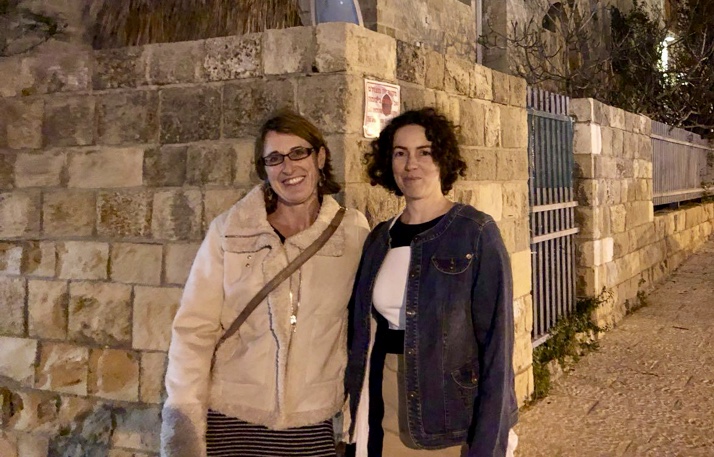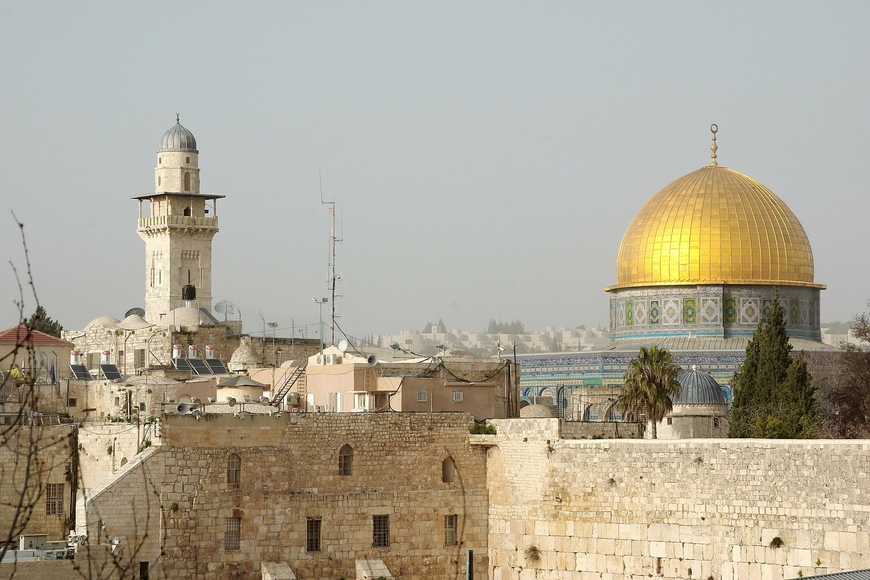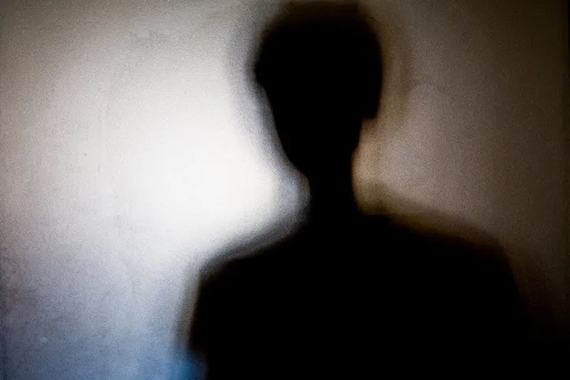HRI Research Symposium Presenter Spotlight: Sonja Kuftinec and Avigail Manneberg
Sonja Kuftinec and Avigail Manneberg, recipients of funding from the Human Rights Initiative, are in the midst of an exciting research project that combines their academic work in the arts with their own personal connections to Israeli and Palestinian identity. The pair have begun embarking on an exploration of how “artistic representation can redress historical amnesia” through participatory-action research focusing on the complex, conflicting identities attached to an area in the Galilee. The researchers will present their current progress on the project, called “Contested Home: Memory, Commemoration, and Palestinian Rights in the Galillee,” at the upcoming Human Rights Initiative Research Symposium on November 13th, 2018.
Kuftinec and Manneberg’s project focuses on the story of region in the Galilee. In 1948, Palestinans with Israeli citizenship (PICs) living in the village of Mi’ar were forced to flee their homes after the 1948 war, and their village was destroyed. In 1974, Israeli Jews would come to settle in the same location, and build a new village called Ya’ad. Today, these Jewish Israelis and their descendants still call this village their home, while PICs from the former Mi’ar and their descendants live in an area close by. However, the two populations are separate in ways both metaphorical and physical. The village of Ya’ad at present has a large structural divider around it, effectively cutting off the two different groups from one another.
According to Kuftinec and Manneberg, the story of the Palestinian deportation from the village is still “a story that was not told, a taboo” among the Jewish Israelis in Ya’ad, and that for the PICs and their descendants, their story of cultural destruction and a stolen homeland remains. At the intersection of these historical events are human rights issues that Kuftinec and Manneberg work to grapple with alongside the Jewish Israelis and PICs. Such rights issues include the Right of Return, the rights of the displaced, and recognition of Article 6 of the Universal Declaration of Human Rights (“everyone has the right to recognition everywhere as a person before the law”).
Beyond these scholarly pursuits, both Kuftinec and Manneberg have unique personal connections to the work that has partly inspired this project. Manneberg herself was born 40 years ago in Ya’ad. In her home growing up, WWII and the 1948 war were both taboo topics, and she did not grapple with the history of her homeland till much later in life. According to Manneberg, this personal history greatly informed her desire to work on this subject. She says that the “project provided me with the opportunity to critically reconnect with home. Through a year of multiple, frequent encounters with neighbor Israeli-Palestinians and Jewish Israelis, I came to a stronger realization about the magnitude of the disconnection and fear, as well as the longing of both sides for acknowledgement.”
Kuftinec’s husband’s family immigrated as part of the European Jewish diaspora, and she met him during work with Seeds of Peace, a US organization that brings together youth from conflict regions, such as Israel and Palestine. She says that this research process and returning to Israel has facilitated her reconnection with friend and theatrical activist Chen Alon, founder of Combatants for Peace and other activist movements. As a result, she was able to view three theater projects connected to Alon’s human rights work. Further, Kuftinec was able to connect with her colleague Jen Marlowe whose activism focuses on Palestinian Human Rights “conceived outside of a relation to Israel.” Kuftinec says that from this experience, she has been “reminded...that the pathways towards fostering human rights of recognition, through arts-based mediums such as shared storytelling and public testimonials, are multiple.”
The research team has already begun undertaking the substantive work of their research using multidisciplinary artistic dialogue with both PICs, Jewish Israeli’s of Ya’ad, and descendents from both groups. When formulating their research plan Manneberg and Kuftinec envisioned a series of workshops. However, the team’s original plan has shifted in response to the realities they have observed on the ground, as well as the changing political landscape between the United States and Israel. The team described that, “we...needed to respond to reality on the ground, to find partners on both sides, and establish trust with those partners and with participating artists. The Palestinian diaspora is at a significantly different place in terms of their demands for recognition than the Jewish Israelis are currently able to attend to.” As a result, Kuftinec and Manneberg responded by reworking their project timeline and focusing more on working first with the Jewish Israeli group on its own instead of immediately bringing the groups together. In this process, they are introducing the Jewish Israeli group to Palestinian testimony from diaspora members, and concurrently begining to build connections with Palestinian artists individually.
One aspect of the research project that the team will be presenting on at the HRI Symposium is the successful facilitation of a workshop held this past July. A group of 15 intergenerational Jewish artists from Ya’ad “engaged in a deep process of encountering Mi’ar narratives in various ways” while being led by two co-facilitators, a Palestinian facilitator and a Jewish artist. The workshop participant group is continuing this work on its own and the participating artists are brainstorming their own projects that will aim to “explor[e] ancestry and contested histories that structure the Ya’ad/Mi’ar relationship with the end goal of a community exhibition of their final projects.
To hear more about Kuftinec and Manneberg’s interdisciplinary artistic research and experiences, be sure to attend the HRI Research Symposium on November 13th, 2018. RSVP here.




